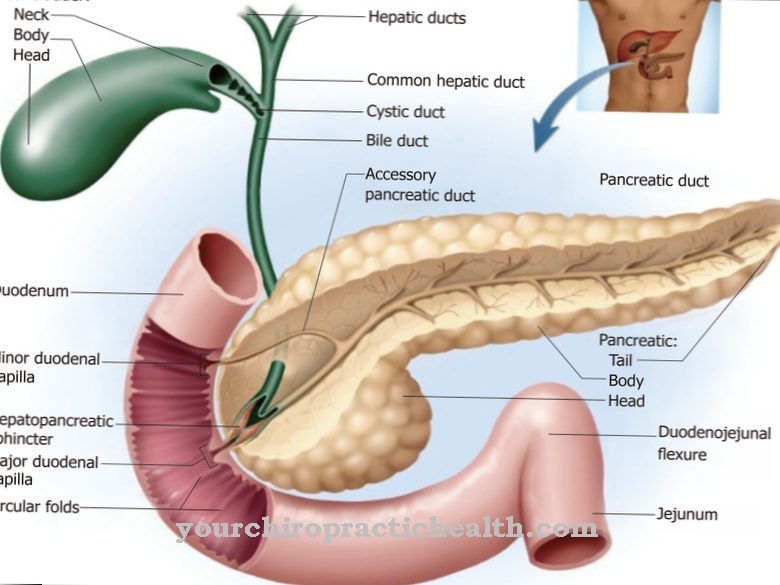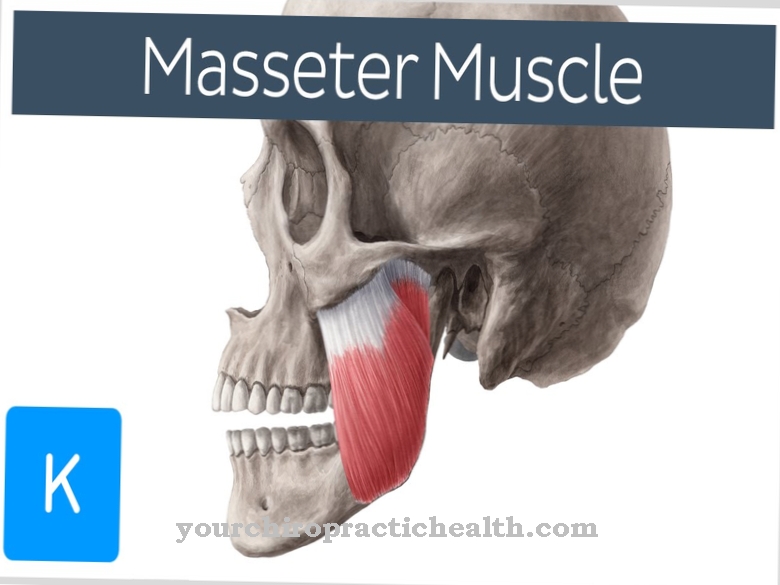The IX. The cranial nerve gets its fibers from the Nucleus salivatorius inferior. They move on to the parotid gland and supply it. The parotid gland is an important organ for the production of saliva.
What is the inferior salivator nucleus?
The inferior salivator nucleus is a nucleus of the cranial nerve. It is located in the Medulla Oblangata. As part of the central nervous system, it helps supply certain areas in the mouth and throat. Its axons move with the IX. Cranial nerve.
This is the glossopharyngeal nerve. With its branches, the cranial nerve innervates areas in the head that are of great importance for taste recognition, the swallowing process and the regulation of breathing. The cells of the inferior salivary nucleus give the cranial nerve efferent fibers. With these he moves on and finally supplies the parotid gland. On the way to the parotid gland, the first neurons are absorbed in the inferior salivary nucleus.
Further uptake of neurons occurs in the otic ganglion. At 20-30 g, the parotid gland is the largest gland in the human body that produces saliva. This is important for the decomposition of food in the mouth and also for language formation. In addition, the mucous membranes in the mouth and throat are adequately supplied with the saliva.
Anatomy & structure
The IX. The cranial nerve draws its fibers from four different nuclei. The glossopharyngeal nerve is fed by the nucleus ambiguus, the nucleus salivatorius inferior, the neuclei tractus solitarii and the nucleus spinali nervi trigemini.
The pharyngeal and soft palate muscles are innervated with the cells of the nucleus ambiguus. The Neuclei tractus solitarii innervate the posterior third of the tongue together with the nucleus spinalis nervi trigemini. Some cells also supply the auditory tuba and the middle ear. The nucleus salivatorius inferior belongs together with the nucleus salivatorius superior to the parasympathetic nuclei of the brain stem. Its fibers are complex. They innervate the parotid gland, the parotid gland. This is one of the largest salivary glands in the human body.
It is located on both sides of the human head just below the earlobe. The secretion of the parotid gland supplies the mouth with saliva. In addition, it produces the necessary saliva that is needed for the mucous membranes in the throat, oral cavity and lips. The saliva contains important electrolytes, proteins and enzymes.
Function & tasks
The task of the inferior salivator nucleus is to provide neurons. From these the glossopharyngeal nerve draws its fibers. With them he innervates important areas on the face. The cranial nerve is responsible, among other things, for supplying the parotid gland. In order for it to be able to do this to a comprehensive extent, it is partially given the opportunity to form parasympathetic fibers from the inferior salivary nucleus.
These fibers continue to the otic ganglion, the so-called ear node. There they experience another switch until they then reach the parotid gland. The inferior salivary nucleus thus plays a key role in enabling later saliva formation in the parotid gland. The saliva has multiple functions. It plays just as important a role in language formation as it does in supplying the mucous membranes in the mouth and throat. He protects and repairs them. In addition, it is needed when eating.
The saliva in the mouth breaks down carbohydrates and thus takes on a pre-digestive function. The oral flora is kept in balance with the saliva and the formation of plaque on the teeth and between the teeth is prevented. The existing tooth substance is remineralized by the saliva. In addition, saliva has an important function in the defense reaction in the mouth and throat against various bacteria and viruses. In addition to various muscles and nerves, the act of swallowing requires the saliva from the parotid gland to run smoothly.
Diseases
Lesions of the various so-called glossopharyngeal nuclei usually lead to an impairment of the corresponding functions. A total failure is to be classified as rather unlikely, since a central failure only occurs in exceptional cases.
Usually a change in sensitivity or a partial restriction can be expected. Lesions of the inferior salivary nucleus result in the IX. Cranial nerve cannot form fibers from it at all or to an insufficient extent. This means that it has to continue on its way in supplying the parotid gland with fewer fibers. As a result, a reduced flow of saliva is to be expected. Dry mouth sets in and this leads to impairment in language formation and food intake. In addition, taste perception is often impaired.
The papillae on the tongue are less sensitive to the taste and thus transmit their signals in a reduced form. With a reduced flow of saliva it comes to bad breath, increased inflammation of the oral mucous membranes and a stronger attack of the teeth by caries. Food residues can only be removed in a lesser form due to the reduced flow of saliva.
The acids absorbed through food are no longer sufficiently neutralized and carbohydrates are no longer pre-digested. This slows down the digestive process as a whole. Increased dental care is one way of compensating, but it can be classified as insufficient for the creation of a balanced oral flora. The most common diseases of the parotid gland include viral and bacterial inflammation, salivary gland swelling, mumps and the formation of tumors.



























